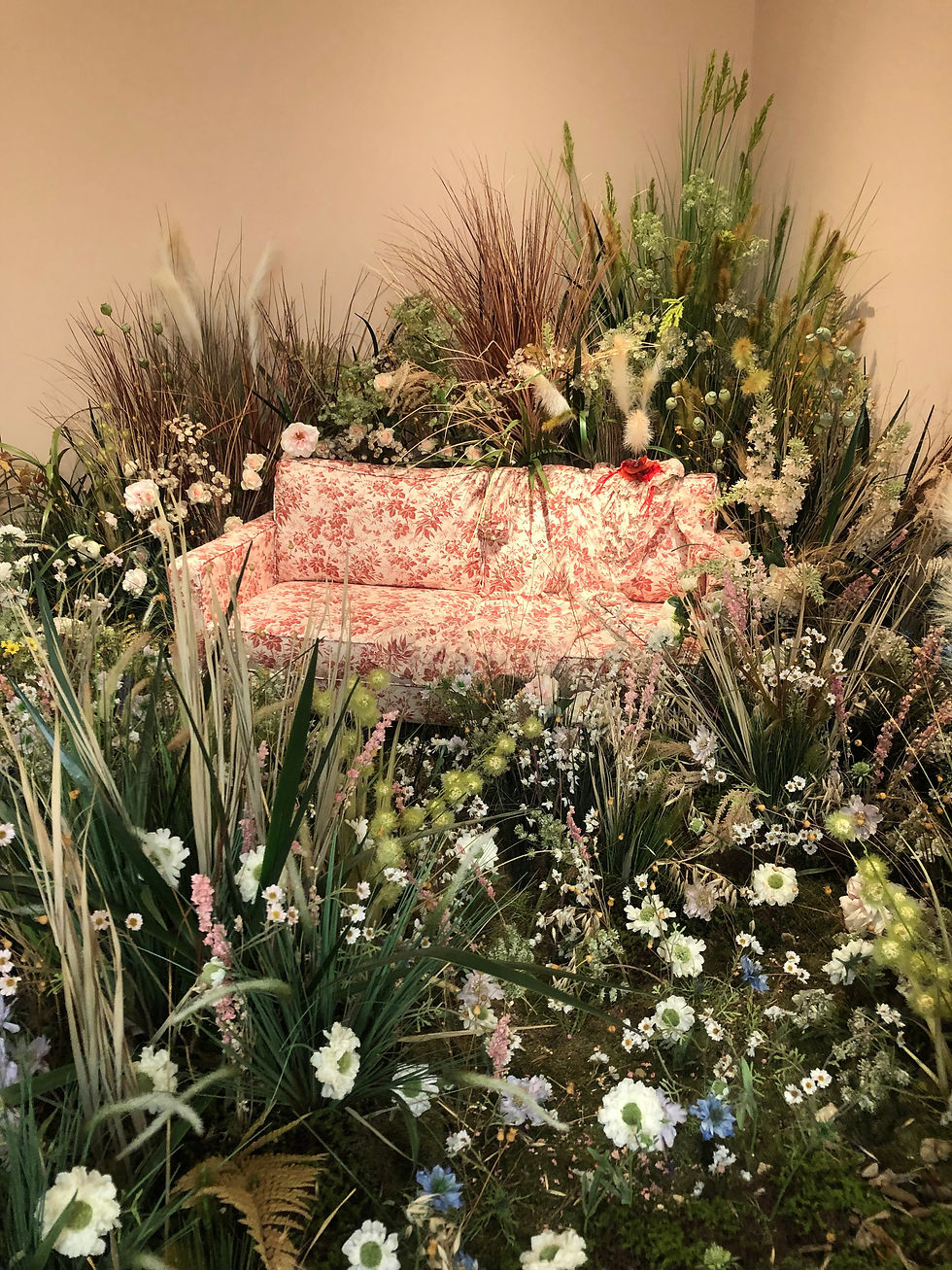Finding Fashion in Venice, Florence, and Milan by Serena Gupta
- hoasocietywarwick
- Apr 9, 2022
- 4 min read
Venice Blog
From January to March I had the honour of studying at Querini Stampalia Fondazione in Venice with the University of Warick and Ca’Foscari. Over the ten weeks of studying History of Art I not only explored Venice, but I also took a weekend each to visit Florence, and Milan during Women’s Fashion Week. My studies and interests include both Art and Fashion. Therefore, after travelling to some of the most famous art galleries in Italy, I also wanted to find some museums tailored for fashion, as of course Italy is a powerhouse for fashion. This blog entry is to inspire the next art historian students to some fashion related destinations.
In Venice itself, I recommend exploring the streets where the high-end luxury fashion stores are. For example, in Campo S.Moise, Versace is situated there. However, this Versace store was designed and curated by Gianni Versace himself. He designed dolphins and the medusa mosaics on the ground floor and a shop assistant told me he individually placed some of the mosaics down himself. To know Versace curated the store, it makes the experience much more heart-felt and it makes you understand Versace’s vision in grounding Italian heritage within his clothing. This is also showcased by the columns with Corinthian capitals on the upper floor. Columns and mosaics, as well as Versace clothing designed with the Greek key all connote ancient Greco-Roman mythology, fundamental to Italian heritage.



Likewise, exteriors should be explored at Salizada S. Moise where Bottega Veneta and Louis Vuitton are. Louis Vuitton includes an exterior plaque that features carved motifs related to theatre, such as a tape reel and a violin. Thus, the previous use of the building was a theatrical space. Additionally, Bottega Veneta is detailed with a wrought iron anchor on the roof at the front of the store. If you look in the windows you can see a beautiful glass ceiling roof on the interior. The store appears to have been a previous conservatory whereby ships could approach the front of the building. This would be a feasible judgement as Salizada S. Moise was part of the additional extensions of Venice. A way to identify roads that were built to extend Venice are shown by streets that appear wider than usual.



Another example of these streets is Calle Larga XXII Marzo. It is interesting to investigate the exterior of the luxury stores on this street. For example, Dolce and Gabbana is highly decorated with mini statuettes of lions on the detailing of the balcony, as well as rounded arched windows. In comparison to the detailing on Dolce and Gabanna’s exterior, the Salvatore Ferragamo store has a plaque on the outside stating ‘Proprietà Istituto Nazionale Assicurizioni’, which indicated its previous use as a building for National Insurance.


(Photo from Architectual Digest)
Moving onto Florence, I visited the Gucci Garden Museum located in between Piazza della Signoria and the Palazzo del Bargello. It was a beautifully curated museum that took visitors through the genius behind some Gucci innovations and seasons. For example, the fragrance Gucci Bloom was showcased by a Gucci textiled sofa surrounded by greenery and fresh flowers. Likewise, the Soul Scene represented the Pre Fall of 2017 by a room showcasing a video of soul dancing. Other rooms such as a maze of mirrors, and glass cabinets of Gucci sneakers are also displayed. If you are interested in what a certain product would look like if it was a room, to see the creative direction behind the product, this museum is definitely worth the visit.



I also visited the Salvatore Ferragamo museum in Piazza di Santa Trinita, Florence. This museum was a stunning journey through the inspiration of Salatore Ferragamo’s silk scarf designs. A lot of animals and travels through Africa and Asia inspired various collections. Each scarf shown was curated with an illustration, letter, book or item to represent the background and ideas behind the scarf. For example, the scarf featuring the elephants is accompanied by a display of an elephant sculpture hand painted and crafted in India.


Finally, in Milan I visited the Armani/Silos Museum in Via Bergognone. The museum was divided into four parts. The ground floor is titled ‘A Sense of Belonging’, the first floor is called ‘Androgynous’, the second flood ‘Ethnicities’ and the final third floor is called ‘Stars and Digital Archive’. Each floor featured both visuals and clothing from the archives. There was a collation of Armani magazine photographs that were displayed on the walls of one room with mirror tiles on the floor. The whole room was filled with fashion photography which really narrates the stories behind each piece. In the ‘Ethnicities’ floor it played oriental music which brought the colourful dresses to life. The museum space was a large, open concrete high-ceilinged building, which brought emphasis to the displays as it set in a neutral setting so the character came from the clothes.



Overall, on your Venice term abroad explore the country full of fashion and where some of the most influential designers were born. Vicenza is also a beautiful place to visit, the home of not just Andrea Palladio but also the brand Bottega Veneta!
(All author’s photographs)




Comments